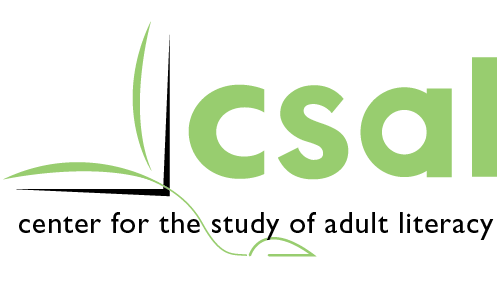Are You A Researcher?
Library Information for Researchers
This library contains over 1,600 different materials for learners to read. The texts are categorized by both reading level (Easier, Medium, Harder) and topic (Health, Food, Babies, Children, Teenagers, Families, Advice, Non-Fiction (Real Life Stories), Fiction (Made-Up Stories), Jobs and Work, Money, History, Science, and Other). All of the reading materials exist on external websites and have been reviewed for readability level and subject matter by CSAL researchers at the University of Memphis and Georgia State University. CSAL and its learners, teachers, and researchers have been given copyright clearance to access these materials on external websites. Any other use may require additional copyright clearance from the source. If you have any questions or need more information about this library, please contact us by clicking here. If you plan to use this library for your research, or if you’d like to suggest additional texts to add to the library, please let us know by clicking here.
What are the reading levels of the texts?
The text materials are divided into three levels based on the Coh-Metrix readability index: Easier, Medium, Harder. Learners can access topics by reading level by clicking on these readability levels. Please consider that individual learner background knowledge makes a big difference in terms of level of readability. For example, a low-reading level learner that has extensive knowledge about skin cancer may be able to read harder materials about this topic. A high-reading level learner who knows nothing about the topic may have more success reading easier texts.
Readability levels were developed based on a computer system called Coh-Metrix which takes into account 108 different text-based factors to estimate the difficulty of a text. Coh-Metrix provides descriptive text information (number of paragraphs, sentence count, word count). It also considers linguistic characteristics (lexical diversity, syntactic complexity) and discourse characteristics, such as text coherence and genre (narrative versus informational text). It is this combination of factors that allows reading materials to be scaled on dozens of aspects of language and discourse. Readers at different levels are more likely to have success with reading materials when the texts account for their familiarity with discourse styles, syntactic patterns, word frequency and concreteness, and so on.
To view a basic overview of Coh-Metrix, click here.
To view an advanced overview, click here.
To view a quick reference guide, click here.
Which topics do the texts cover?
CSAL researchers reviewed each text to determine its main subject matter. The texts were sorted into 14 major categories and simple topic titles were developed. The category headings are Health, Food, Babies, Children, Teenagers, Families, Advice, Non-Fiction (Real Life Stories), Fiction (Made-Up Stories), Jobs and Work, Money, History, Science, and Other. Texts may appear in more than one category as appropriate. For example, a story about healthy foods for your children may appear in the categories of Health, Food, Children, Family, and Advice. In this way, learners have the broadest access to reading materials; over 4,100 library entries have been created from the 1,600 texts.
How do learners find the texts that interest them?
Learners can access appropriate reading level materials by clicking on any of the topics. Simple instructions are included on each library page to guide learners in using the library, however, learners will need help from teachers when learning to use the library. Multiple sessions with the learner are recommended to show the learner how to navigate and use the library (for example, learning how to get back to the main library page after a text is read may be tricky for many of our students). Equally important, teachers are encouraged to guide the learners toward texts that are useful to their lives and that may potentially grab their interests. The hope is that the learners will be inspired to read many texts in a self-regulated manner.
Do I have permission to use these texts in my research?
CSAL and its learners, teachers, and researchers have been given copyright clearance to access these materials on external websites. Any other use may require additional copyright clearance from the source. If you have any questions or need more information about this library, please contact us by clicking here. If you plan to use this library for your research, or if you’d like to suggest additional texts to add to the library, please let us know by clicking here.
What if I have questions or concerns about the texts?
These texts cover different topics from many different external website sources. The goal of this library is to collect web-based texts that are written for adult learners. Please note that we are not responsible for the content contained therein; our role is to organize the texts into a useable library for teachers, researchers, and adult learners. Also, there are times when external websites change or remove links from their websites. If you have any questions about certain texts, or have difficulty when using a link, please contact us by clicking here. Thanks in advance for helping us maintain an accurate and current library!
